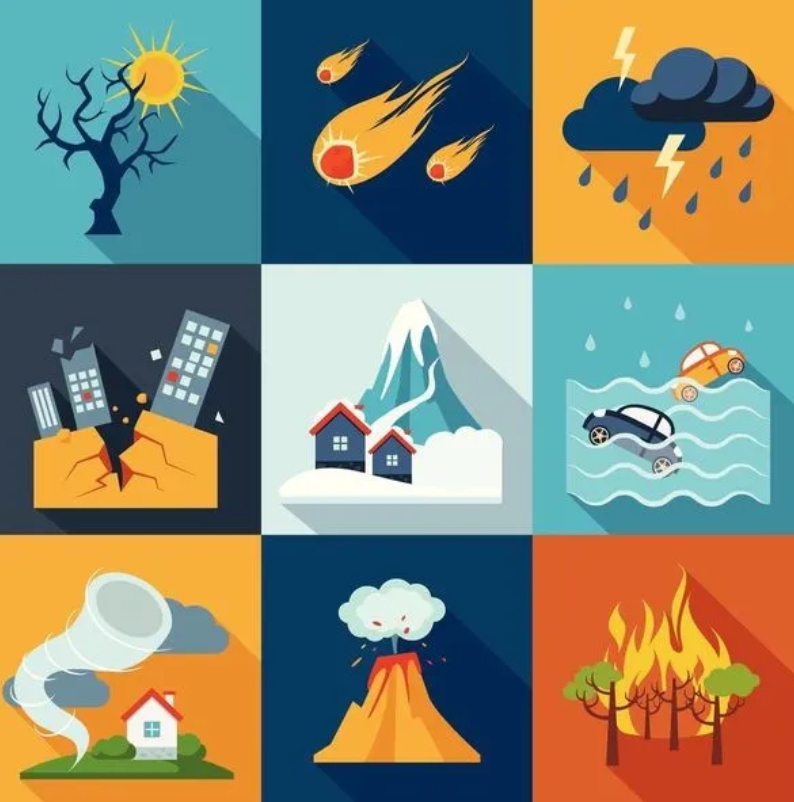【First Aid Classroom】How Should Patients with Cardiovascular and Cerebrovascular Diseases Deal with Natural Disasters
I. What Are Natural Disasters?

According to the United Nations Office for Disaster Risk Reduction (UNISDR) and the World Health Organization (WHO), natural disasters are a series of events caused by abnormal changes in the natural environment, resulting in personal casualties, property loss, social chaos, and environmental destruction. Common natural disasters include heatwaves, floods, severe cold, earthquakes, tsunamis, landslides, storms, and more.
II. What Are Cardiovascular and Cerebrovascular Diseases?
As defined by WHO, cardiovascular and cerebrovascular diseases (CVDs) refer to diseases of the heart and blood vessels and are the leading cause of death worldwide. This includes coronary heart disease, cerebrovascular diseases, congenital heart disease, rheumatic heart disease, peripheral vascular diseases, etc. The number of patients with CVDs in China is substantial and continues to rise, with the "Report on Cardiovascular Health and Disease in China 2020" showing approximately 330 million people affected.
III. Why Should Patients with CVDs Pay Special Attention to Natural Disasters?
Epidemiological studies over the past decades have confirmed that various natural disasters can trigger or exacerbate CVDs, leading to events such as angina, myocardial infarction, heart failure, readmission, stroke, cerebral hemorrhage, and even death. For example, after the 2004 Niigata earthquake in Japan, the mortality rate for emergency myocardial infarction increased threefold.
IV. How to Properly Respond to Natural Disasters?
Preparations Needed Before a Disaster:
Correct Disease Assessment: Assess the severity and vulnerability of your condition.
Information Gathering: Collect reliable disaster warning information from authoritative national departments and media.
Preparations Before the Disaster: Engage in self-education, prepare medications and devices, plan evacuation points, and stock up on other essential supplies.
Early Response Methods When a Disaster Occurs:
Distance yourself from the disaster and potential secondary disasters to ensure safety.
Act quickly and orderly, follow disaster management and organization, and avoid panic.
Ensure necessary living conditions such as water, food, fuel, heating materials, communication equipment, and lighting.
Maintain a clean environment, close to medical resources, and away from harmful or contaminated substances.
Carry essential medications and devices, including daily medication for CVDs and emergency supplies.
Long-Term Response After a Disaster:
Stay away from disasters, secondary disasters, and harmful or contaminated substances caused by the disaster.
Comply with social management and organization, and stay away from turbulent and chaotic areas.
Maintain and improve basic living conditions, including safe and reliable housing, clean water, sufficient and balanced diet, personal hygiene, necessary exercise and recreation, and a good mental state.
Establish positive social connections and obtain social support.
Persist in the use of daily medication and devices for CVDs and actively self-monitor.
Establish smooth access to medical resources, actively seek medical services when necessary, and actively follow up.
Pay attention to the prevention and control of infectious diseases and vectors such as rodents, mosquitoes, and cockroaches.
Gradually restore self-social functions and economic activities to promote sustainable development.
Main Content of Cardiac Rehabilitation:
The main content of cardiac rehabilitation includes quitting smoking, reasonable exercise, a balanced diet, rational use of medication, maintaining mental health, actively returning to society, and promptly and accurately self-assessing throughout the process, addressing issues in a timely manner or seeking help.
In summary, natural disasters are an inevitable part of human life on Earth, unpredictable and elusive. Patients with cardiovascular and cerebrovascular diseases are more susceptible to impact and harm during natural disasters, causing dual damage to health and property. Only by preparing in advance and responding calmly can we make the best choice.
Author Introduction:
Huang Kaisen (Deyang People's Hospital), Debarati Guha-Sapir (Center for Research on the Epidemiology of Disasters, Catholic University of Louvain, Belgium)

